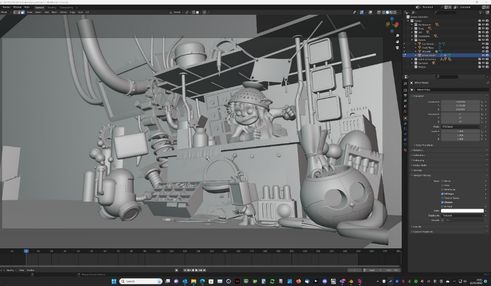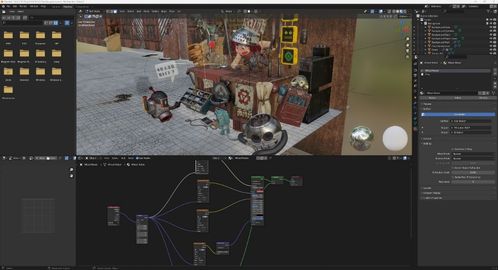AMD is a long-standing supporter of Blender® with regular contributions to both the Blender Development Fund and the Blender Code Base. Our continued support demonstrates the desire to make AMD the hardware of choice for Blender artists.
During this continued support and development, Blender announced in April 2021 that they were going to completely rewrite their default renderer, Cycles. This step was welcomed by most of the Blender community, but there was a fairly significant detail in the rewrite which affected AMD users directly. Particularly, OpenCL™ rendering support was removed for rendering on AMD GPUs. The motivation, on Blender’s side, was for technical and performance reasons but it left Blender with no support for AMD GPUs.

With OpenCL™ gone, we needed a new vehicle for delivering rendering technology using our hardware. That vehicle was the HIP (Heterogeneous Interface for Portability) API. By accessing HIP architecture, Blender has been able to bring support for AMD hardware back, starting with version 3.0. Those in the Blender community that use AMD hardware were certainly relieved. They could finally make use of all the enhancements that were found in Cycles X, including improved rendering of hair and fur, support for micro-jittering and enhanced ambient occlusion handling.

Further improvements were made possible through HIP RT (with RT meaning Ray Tracing). HIP RT lets developers of HIP applications take advantage of the dedicated ray accelerators in RDNA™ 2 and RDNA™ 3 architecture-based GPUs, such as the new Radeon™ PRO 7000 series and Radeon™ RX 7900 series GPUs for real-time ray tracing.
HIP RT was just made available with the public 3.6 beta version of Blender. Early tests indicate that Blender 3.6 with HIP RT performs up to 27% faster on the Radeon™ RX 7900XTX GPU compared to Blender 3.5.1 with HIP running on the same hardware1.
Alongside HIP and HIP RT with Cycles X, it’s worth noting that AMD also has its own render engine, Radeon™ ProRender. As a physically based engine, developed to open industry standards, artists are able to create images and videos that rival the likes of VRay, Arnold and others.

Radeon™ ProRender is available as a plug-in for Blender and can be used to render anything – product designs, architectural visualizations, visuals effects, and more. Our plug-in fully integrates Radeon™ ProRender into Blender® 2.80 and above for Microsoft Windows®, macOS®, and Linux®, meaning you can use its existing lights, materials, and textures, and it renders your geometry accurately. Radeon™ ProRender also comes with a library of materials to get you started. This will be particularly appealing to artists who are new to the renderer but want to give it a spin as photo-realistic results can be achieved in a fraction of the time because of it.
To sum it all up, AMD has a long and supportive history with Blender. The development of HIP, HIP RT and AMD‘s own render engine, Radeon™ ProRender, show our commitment to a continuing partnership. Planned support for USD and MaterialX compatibility will further cement AMD’s place in the Blender community and the addition of hardware ray tracing will ensure artists have the speed and capability they need from their graphics cards. This all adds up to a very bright future for AMD users and Blender.
Footnotes
- Testing conducted with AMD Performance Labs as of June, 2023, on test system comprised of an AMD Threadripper™ Pro 5975WX processor, with 64GB DDR4-3600MHz RAM running Microsoft Windows 11 Pro (22621) with an AMD Radeon™ RX 7900XTX GPU using AMD Software: Adrenalin Edition 23.5.2; Blender 3.6 public beta (HIP RT) vs Blender 3.5.1 (HIP) https://www.blender.org; PC manufacturers may vary configurations, yielding different results. Performance may vary based on use of latest drivers. RPS-164.